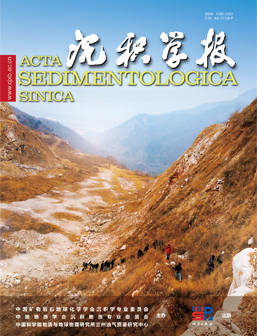Sulfur cycle and its geological significance during T-OAE in Ordos Basin
doi: 10.14027/j.issn.1000-0550.2023.112
- Received Date: 2023-08-22
- Available Online: 2023-12-05
-
Key words:
- Sulfur isotopes /
- Pyrite /
- Ordos Basin /
- Oceanic Anoxic event
Abstract: Abstract: [Objective]Currently, research on the Early Jurassic Toarcian Oceanic Anoxic Event (T-OAE; ~183 Ma) in the Ordos Basin mainly focuses on paleoclimate conditions, sedimentary environment evolution, and biodiversity changes, while the mechanisms of sulfur cycling during the T-OAE period in lakes remain unclear.[Methods]In order to further elucidate the sulfur cycling mechanism, Petrology and Geochemistry analyses were conducted on mudstone and black shale samples from the Anya section. The mechanisms of sulfur isotope fractionation during the T-OAE period were explored using major and trace elements and pyrite sulfur isotopes (δ34Spy).[Results and discussions]The pyrite in the Anya section samples mainly exists in the form of tetrahedral crystals, forming framboidal pyrite. The δ34Spy values of the samples exhibit anomalously positive values (ranging from 2.7 to 14.1‰, with an average of 8.3‰). Based on the variations in δ34Spy and total organic carbon (TOC) in conjunction with geochemical indicators (δ13C, TS, Corg/P, (La/Th)N), the evolution of the lake sedimentary environment during the T-OAE period was divided into four stages (high organic matter stages I and II, low organic matter stages I and II). [Conclusions] The δ34Spy values during the T-OAE period in the Anya section of the Ordos Basin coincide with atmospheric precipitation and surface runoff, indicating that the main source of sulfur in the lake is sulfate in the water mass. The sulfur isotopes of the samples are mainly controlled by the redox conditions of the lake bottom water and organic matter, and are independent of sedimentation rate and sulfate concentration. When the dissolved oxygen in the basin bottom water is low and the organic matter content is high, dissolved oxygen infiltrates into the sediment, activating anaerobic oxidants and promoting the reoxidation of H2S, resulting in positive δ34Spy values through Rayleigh fractionation. When the bottom water environment of the lake is oxygen-rich and the organic matter content is low, dissolved oxygen infiltrates into sediments, activating anaerobic oxidants and promoting H2S reoxidation, leading to a positive δ34Spy shift through the Rayleigh fractionation model. When the bottom water environment of the lake is oxygen-deficient and the organic matter content is high, the activity of sulfate-reducing bacteria is enhanced, promoting the MSR reaction and preferentially incorporating 32S, resulting in a negative δ34Spy shift. The sulfur cycle during the T-OAE period in the Anya section is mainly controlled by local/regional sedimentary environments, but the sulfur cycle is also influenced by global warming and intensified hydrological circulation during the T-OAE period
| Citation: | Sulfur cycle and its geological significance during T-OAE in Ordos Basin[J]. Acta Sedimentologica Sinica. doi: 10.14027/j.issn.1000-0550.2023.112 |






 DownLoad:
DownLoad: